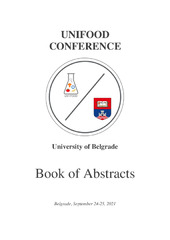Приказ основних података о документу
Effect of soybean/proso millet intercropping combined with bio-fertilizer on accumulation of essential elements in grain
| dc.creator | Šenk, Milena V. | |
| dc.creator | Simić, Milena | |
| dc.creator | Milojković-Opsenica, Dušanka | |
| dc.creator | Tešić, Živoslav Lj. | |
| dc.creator | Brankov, Milan | |
| dc.creator | Kodranov, Igor | |
| dc.creator | Dragičević, Vesna | |
| dc.date.accessioned | 2022-05-04T12:53:38Z | |
| dc.date.available | 2022-05-04T12:53:38Z | |
| dc.date.issued | 2021 | |
| dc.identifier.isbn | 978-86-7522-066-4 | |
| dc.identifier.uri | http://rik.mrizp.rs/handle/123456789/885 | |
| dc.description.abstract | Intercropping, as sustainable agricultural practice effectively uses environmental resources, affecting the nutritive quality of crops by modifying the concentration of macro- and microelements in grain. In order to improve the availability of nutrients from the soil, bio-fertilizers could also be used successfully in elements management. A field experiment was conducted with soybean (var. Selena) and proso millet (var. Biserka) to examine the integrated influence of intercropping and bio-fertilizer on Ca, Mg, S, Fe and Zn accumulation in grain. Mono-crops (T1 - soybean, T2 - millet), as well as tree planting patterns of intercrop, including alternating rows of soybean and proso millet (T3), alternating strips of two rows of soybean and two rows of millet (T4) and alternating strips of two rows of soybean and four rows of millet (T5), were set up in 2018 and 2020. The same combinations, as subplots, were treated with bio-fertilizer Coveron (C) (containing mycorrhizal fungi, Trichoderma and plant growth-promoting rhizobacteria). After harvest, grains were dried and milled and preparation of samples was performed using wet digestion procedure with HClO4 + HNO3. The concentration of Ca, Mg and S were determined by ICP-OES, while Fe and Zn concentration was measured on ICP-MS. Results showed that Coveron reduced S concentration in soybean grain, while the status of other elements mainly remained unchanged. In terms of intercropping, soybean from T5 combination had a significantly higher level of Fe in comparison to T1 and T3, and higher but not significantly than T4, emphasizing alternating strips as more effective for accumulation of this element in grain. Combination T3 + C provided the highest accumulation of Ca, while T5 + C significantly raised Fe concentration. In terms of proso millet, bio-fertilizer expressed a greater impact on Ca, Fe and Zn by increasing their concentration. On the other side, all intercrop combinations expressed a positive impact on Fe concentration and simultaneously reduced Zn concentration. When mutual influence is considered, T4 + C significantly increased Ca and Fe values, while T2 + C increased Zn value, pointing positive effect of integrated and sustainable agricultural practices on an accumulation of essential elements in a grain of proso millet. In conclusion, different intercrop combinations combined with bio-fertilizer could be successfully used to improve the nutritional quality of soybean and millet grains in terms of sustainable food production, but further investigations are required to highlight other aspects of potentially enhanced nutritional quality. | sr |
| dc.language.iso | en | sr |
| dc.publisher | Belgrade : University of Belgrade | sr |
| dc.relation | info:eu-repo/grantAgreement/MESTD/Technological Development (TD or TR)/31037/RS// | sr |
| dc.rights | openAccess | sr |
| dc.rights.uri | https://creativecommons.org/licenses/by/4.0/ | |
| dc.source | Unifood conference, Belgrade, 24 - 25 September 2021 - Book of Abstracts | sr |
| dc.subject | nutritional quality | sr |
| dc.subject | sustainability | sr |
| dc.subject | macro-elements | sr |
| dc.subject | micro-elements | sr |
| dc.title | Effect of soybean/proso millet intercropping combined with bio-fertilizer on accumulation of essential elements in grain | sr |
| dc.type | conferenceObject | sr |
| dc.rights.license | BY | sr |
| dc.citation.spage | 169 | |
| dc.identifier.fulltext | http://rik.mrizp.rs/bitstream/id/4465/bitstream_4465.pdf | |
| dc.identifier.rcub | https://hdl.handle.net/21.15107/rcub_rik_885 | |
| dc.type.version | publishedVersion | sr |


